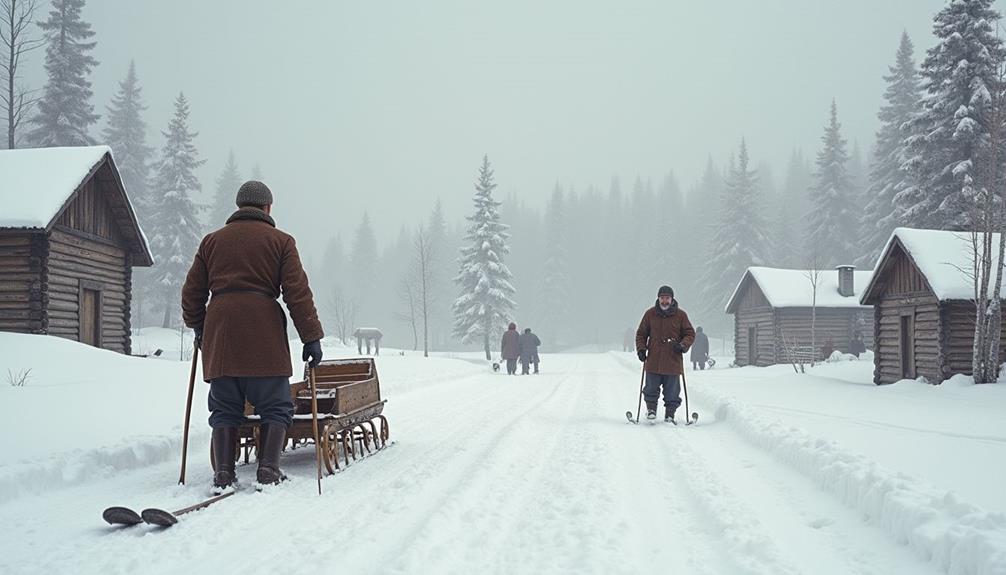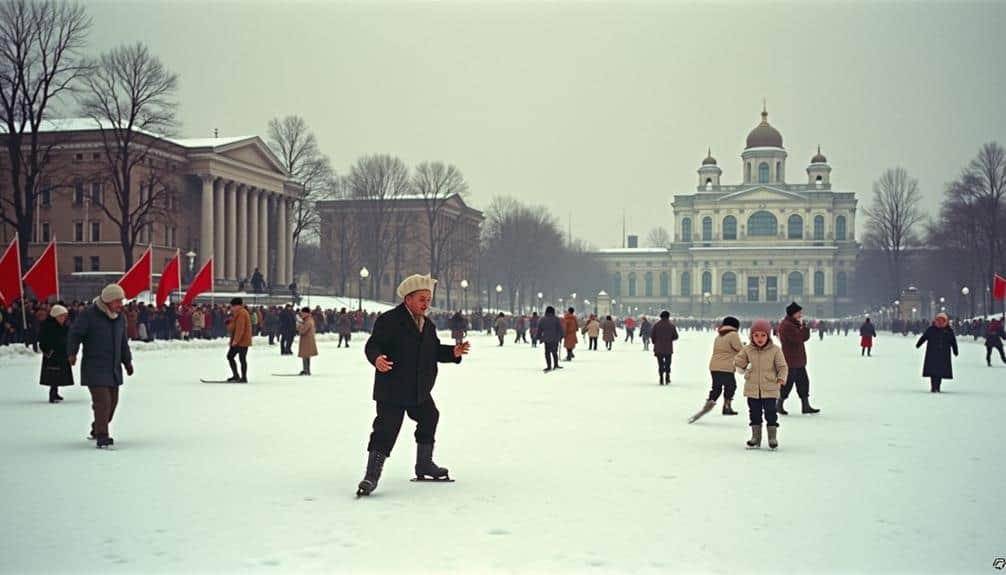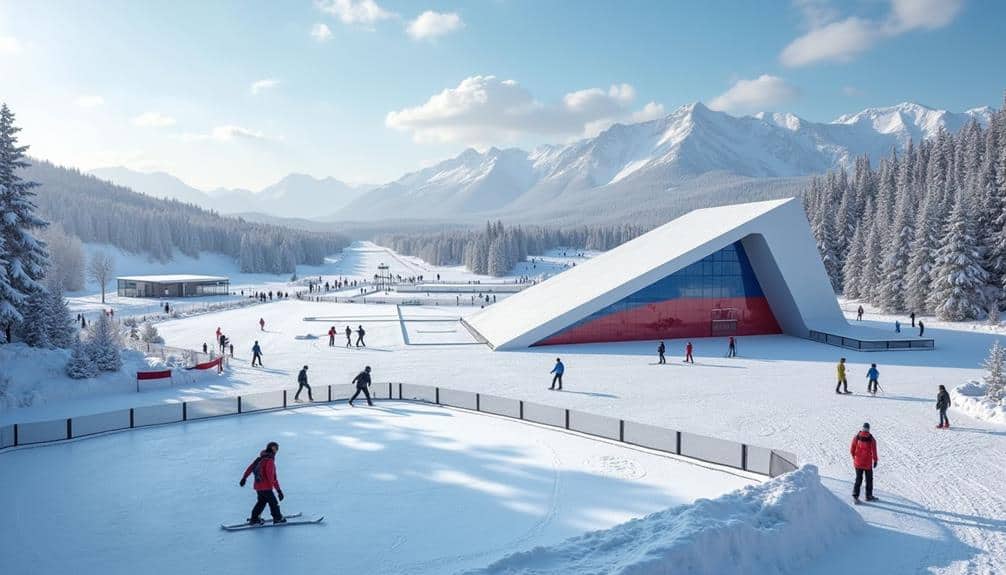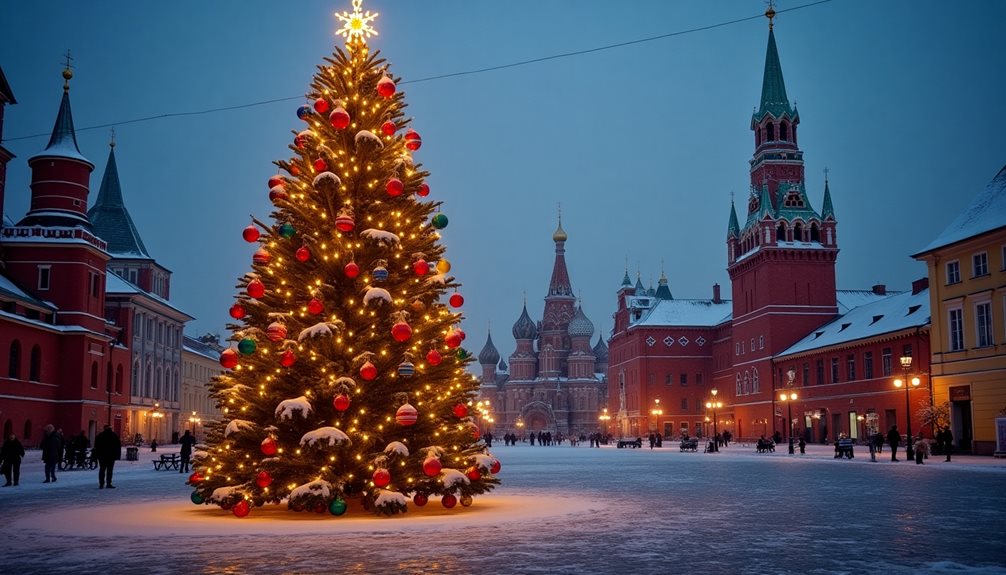The evolution of winter sports in Russia offers a fascinating journey from ancient skiing and ice skating traditions to the high-stakes competitions of today. Early practices laid the groundwork, but it was the organized events of the late 19th century that truly began transforming these pastimes into national passions. The Soviet era saw state-backed initiatives elevate the country’s presence on the global stage, particularly in ice hockey. The Sochi 2014 Winter Olympics marked another pivotal moment, modernizing infrastructure and inspiring a new generation of athletes. Yet, what underlying factors have driven these remarkable transformations?
Early Beginnings and Traditions

Although winter sports in Russia have reached a high level of sophistication today, their origins are deeply rooted in the country’s early history and cultural practices. The vast expanse of Russia’s terrain, characterized by long, harsh winters, necessitated the development of practical skills that naturally evolved into recreational activities. Early Russian communities utilized skis, not just for sport, but as a crucial means of transportation across snow-covered landscapes. Evidence suggests that skiing was prevalent among Russian hunters and gatherers as early as 6000 BC.
In addition to skiing, sledging became an essential method of traversing winter terrain. Traditional wooden sledges, or “sani,” were used for both functional travel and festive events.
Ice skating, another cornerstone of Russian winter culture, can be traced back to the 12th century. Initially, crude skates made from animal bones were used, gradually evolving into the metal-edged skates we recognize today.
Integral to Russian society, these early practices laid the groundwork for winter sports to flourish. They encapsulate a spirit of resilience and ingenuity, reflecting a quest for freedom and self-reliance in the face of a formidable climate.
These traditions continue to influence modern winter sports, underscoring their enduring significance.
Rise of Organized Competitions
With the foundational traditions firmly established, the evolution of winter sports in Russia took a significant leap forward through the rise of organized competitions. This pivotal shift began in the late 19th and early 20th centuries, marking a change from informal, local gatherings to structured events with regulated rules and widespread participation.
The formation of sports clubs and associations played an essential role in this transformation. Institutions such as the Moscow Ski Club, founded in 1895, and the Russian Ski Union, established in 1910, provided frameworks for systematic training and competition.
These organizations not only standardized the rules but also facilitated the exchange of techniques and knowledge, fostering a culture of excellence and innovation.
The inaugural Russian Championships in various winter sports, including skiing and ice skating, attracted participants from diverse regions, creating a sense of national unity and pride. The competitions were often held in scenic locales, enhancing their appeal and accessibility.
Additionally, these events garnered significant media attention, further popularizing winter sports across the country.
This era of organized competitions laid the groundwork for Russia’s enduring legacy in winter sports, emphasizing community engagement and the spirit of fair play. It was a period that celebrated both individual prowess and collective achievement, setting the stage for future advancements.
Soviet Era Developments

As the Soviet Union emerged in the early 20th century, winter sports in Russia underwent a profound transformation driven by state policies and systematic infrastructure development. The Soviet government recognized the potential of sports as a means of promoting national pride and ideological unity. Consequently, substantial investments were made in the construction of sports facilities, including ice rinks, ski resorts, and bobsled tracks, which proliferated across the vast Soviet landscape.
Emphasis on mass participation was a hallmark of Soviet sports policy. The government encouraged widespread involvement through state-sponsored programs and the establishment of sports clubs. This democratization of access allowed citizens from all walks of life to engage in winter sports, fostering a culture of athleticism that transcended socio-economic barriers.
Moreover, the Soviet Union prioritized the scientific approach to sports training. Institutes dedicated to sports science and physical education were established, focusing on optimizing athlete performance through rigorous research and advanced methodologies.
This systematic approach led to the emergence of highly skilled athletes who excelled on the international stage, thereby bolstering the Soviet Union’s prestige.
Breakthroughs in Ice Hockey
The advancement of ice hockey in Russia witnessed significant breakthroughs during the mid-20th century, marking a new era of excellence and dominance. This period saw the establishment of the Soviet hockey system, renowned for its rigorous training regimes and strategic innovations, which propelled the national team to unprecedented success on the global stage.
One of the most notable milestones was the Soviet Union’s remarkable victory at the 1954 World Championships, where they defeated Canada, the then-undisputed leader in ice hockey. This triumph not only shattered preconceived notions about the sport’s hierarchy but also signaled Russia’s emergence as a formidable contender.
The Soviet team’s emphasis on speed, teamwork, and tactical precision became hallmarks of their strategy, setting new standards in international competitions.
Moreover, the infusion of scientific approaches and meticulous coaching techniques played a pivotal role in refining the athletes’ skills. Legendary figures such as Anatoly Tarasov and Viktor Tikhonov were instrumental in fostering a culture of innovation and resilience.
Their contributions not only elevated the sport within Russia but also inspired a generation of players who pursued excellence with unyielding determination.
In essence, these breakthroughs in Russian ice hockey underscored a relentless pursuit of mastery and redefined the global dynamics of the sport.
Modern Facilities and Training

Modernizing the infrastructure and training methodologies for winter sports has elevated Russia’s competitive edge on the international stage. State-of-the-art facilities, such as the Rosa Khutor Alpine Resort and the Iceberg Skating Palace, embody this transformation. Constructed with cutting-edge technology, these venues offer athletes world-class environments to hone their skills.
The Iceberg Skating Palace, for example, features advanced cooling systems and adaptable rinks, allowing for a variety of ice sports under one roof.
Training methodologies have similarly evolved, incorporating scientific approaches and data analytics to optimize performance. The adoption of biomechanical analysis, for instance, helps in understanding athletes’ movements and reducing the risk of injuries.
Additionally, collaborations with international experts have brought in fresh perspectives and techniques, ensuring that Russian athletes remain at the forefront of winter sports innovation.
Furthermore, the establishment of specialized training centers, such as the Novogorsk Olympic Training Center, offers athletes an immersive environment for rigorous, systematic training.
These centers are equipped with modern amenities, including high-altitude simulation chambers and recovery facilities, which are essential for peak performance.
Impact of Sochi 2014
Russia’s substantial investment in modern facilities and training methodologies set the stage for a landmark moment in its winter sports history: the Sochi 2014 Winter Olympics. This event not only marked Russia’s return to hosting the Winter Games after 34 years but also served as a catalyst for the nation’s winter sports development.
The construction of state-of-the-art venues and the implementation of advanced training programs elevated the performance of Russian athletes to unprecedented levels.
The Sochi 2014 Olympics greatly boosted national pride and global recognition for Russia in the domain of winter sports. Russian athletes excelled, securing a total of 33 medals, including 13 golds, which placed the nation at the top of the medal tally. This success was a proof of the efficacy of the rigorous training regimes and modern facilities established in the lead-up to the Games.
Moreover, the legacy of Sochi 2014 continues to resonate, as the infrastructure and heightened interest in winter sports have inspired a new generation of athletes. The event also catalyzed economic development in the region, transforming Sochi into a premier winter sports destination.
Ultimately, Sochi 2014 stands as a pivotal chapter in the ongoing evolution of winter sports in Russia.





